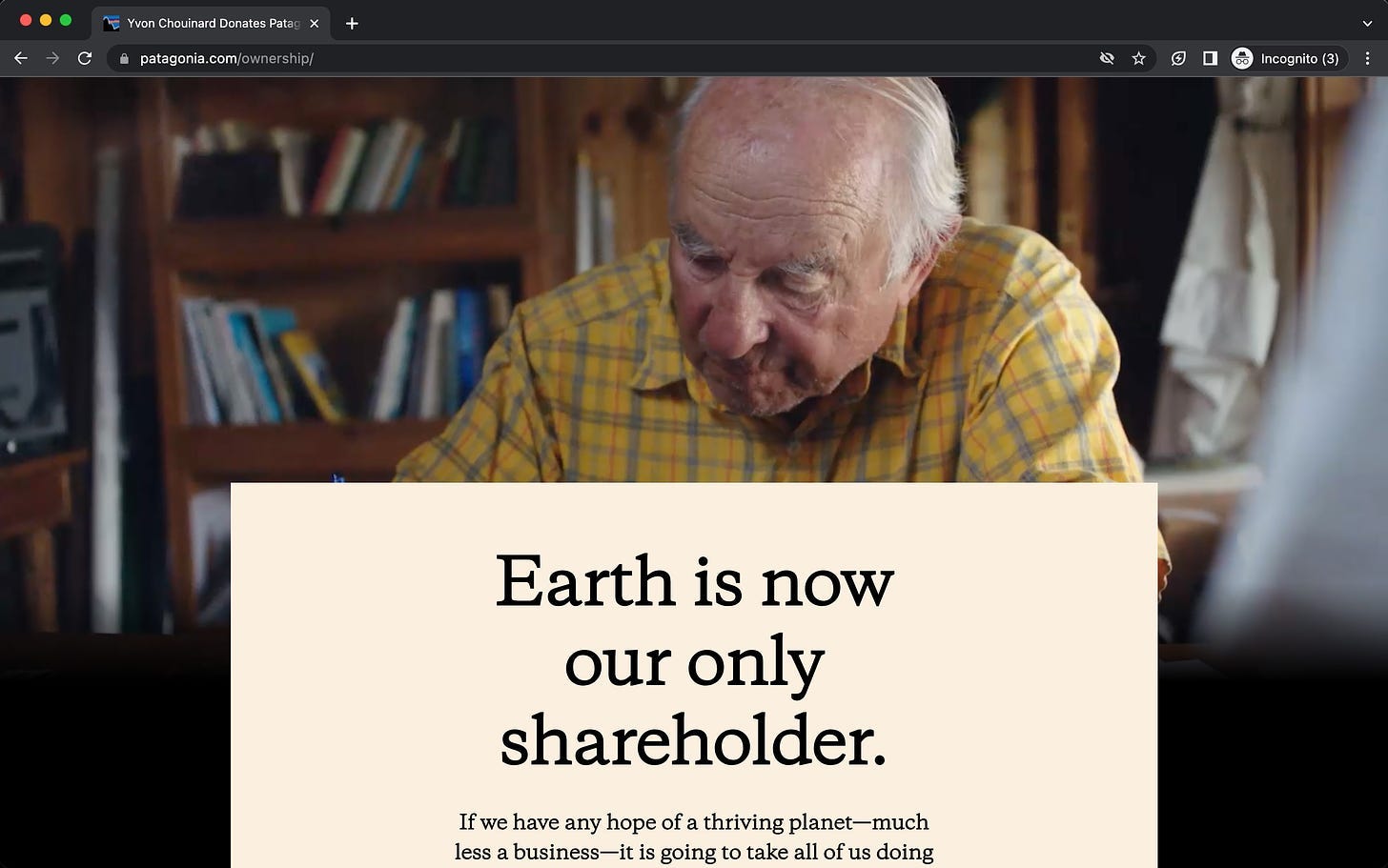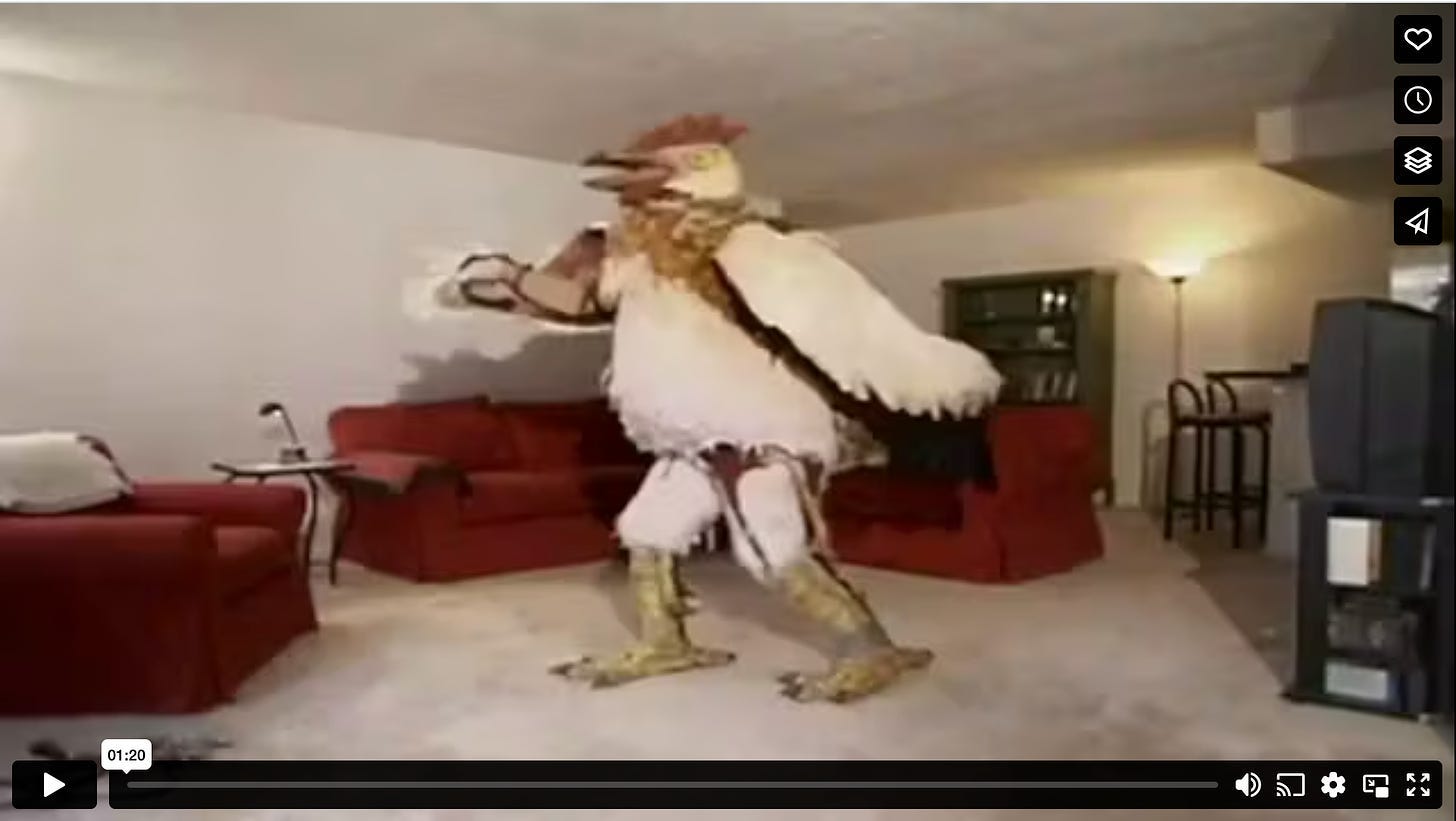Six Modes of Marketing Creativity
How marketing evolved from stories to business transformation
Marketing creativity has evolved far beyond its advertising roots. What started in creative departments has expanded to reshape entire businesses and industries.
Over the last 25 years, we've seen work that hasn't just pushed creative boundaries - it has redefined what marketing creativity can achieve. From storytelling to business transformation, each evolution has expanded possibilities for brands and creators alike.
These six modes of creativity - from Storytelling to Business Model - show how marketing evolved from crafting messages to reshaping organizations. Each represents a fundamental shift in how creativity drives business value.
Creativity used to belong to the creative department, specifically copywriters and art directors, the Old World Order. When I started in this industry, my colleagues and I made websites, digital services, and utilities. To traditional creatives, our work was functional and didn’t have “a story.” We weren’t seen as creatives.
In the last two decades, these archetypes have evolved and mutated over generations. Creatives needed new skills, and non-creatives gained more presence, status, and power.
In this game, being creative isn't enough anymore.
What matters is how that creativity is applied.
The evolution of marketing creativity can be understood through six distinct modes - each representing a fundamental shift in how brands connect with audiences and create value.
The Storytelling Mode (2001~2020)
Digital channels freed storytelling from traditional media constraints. Brands discovered they could engage audiences deeper and longer. Creative excellence meant mastering both narrative craft and new production possibilities.
Example: BMW Films (2001)
“A series of short films produced for the Internet. A form of branded content, the shorts were directed by popular filmmakers globally and starred Clive Owen as “the Driver” while highlighting the performance of various BMW automobiles.” (Wikipedia)
Why it mattered: This was before YouTube. Watching videos online wasn’t a thing yet. You could watch these films in low resolution on the BMW site or get them on a CD-ROM from a dealer. A clever tactic to drive traffic to dealerships.
It was the first example this millennium that proved to brands they could attract an audience using a new distribution mechanism called the Internet. Instead of spending millions on paid media, why not use that money for production? We started to hear “zero media dollar spent” in case studies as a badge of pride.
This work catalyzed the Cannes Lions’ Titanium category: “breakthrough ideas that caused the industry to stop and reconsider the way forward.” (Cannes Lions)
Since then, many brands and agencies have tried to create branded content that would outdo BMW Films.
I don’t believe anyone has.
The creative archetype: Classic Storyteller
The Digital Disruption Mode (2004~ongoing)
Technology transformed how audiences interact with brands. Marketing shifted from one-way messages to two-way conversations. Creative success meant designing experiences, not just communications.
Example: Burger King “Subservient Chicken” (2004)
“On the site, visitors saw a sparsely decorated living room with the submissive mascot standing in the middle. The submissive chicken would respond to hundreds of commands, like ‘do the Moonwalk,’ ‘turn off the lights,’ or ‘jump rope.’” (AdAge)
Burger King Subservient Chicken on Vimeo
Why it mattered: Completely the opposite of BMW Films in production value. Extremely crude on the surface but surprisingly sophisticated in its reaction to human prompts. This was 18 years before the ChatGPT craze. It was so odd yet so captivating.
It was unlike anything before. The idea of a subservient chicken still delivered on “Have it your way,” Burger King’s tagline. This work turned the meaning of “creative” upside down. Being weird was the new cool.
The creative archetype: Mischievous Hacker
Example: Nike+ Running (2005) and Nike+ Fuelband (2012)
“Nike+ Running tracked and analyzed running activities, offering personalized coaching and social features. Nike+ FuelBand was a wrist device that tracked daily activities, converting them into a proprietary metric called Nike Fuel to measure overall activity. Both aimed to enhance fitness and motivate users.” (Wikipedia)
Why they mattered: Modern advertising was defined by Madison Avenue agencies for so long. R/GA, a digital agency in NYC’s Hell’s Kitchen, developed Nike+ Running and Nike+ Fuelband. It, where I started, was an early adopter of digital and a leader of the anti-advertising movement. It “stood with one foot in Madison Avenue and one in Silicon Valley, and then pushed the two together.” This work expanded what a creative agency can do for its clients.
It questioned the nature of advertising. It was no longer about just telling stories about a product or brand. It engaged an audience meaningfully and created a direct, personal connection with each consumer.
Cannes Lions dropped “advertising” from its name and replaced it with “creativity.” The work like Nike+ Running and Nike+ Fuelband influenced that change. Traditional creatives had to accept what they thought wasn’t creative had become creative, or even transcended it.
The creative archetype: Tech-fluent Designer
The Spectacle Mode (2010~ongoing)
Scale of impact replaced scale of media spend. Brands learned to create cultural moments bigger than advertising. Creativity became about orchestrating real-world phenomena.
Example: Red Bull Stratos (2012)
On 14 October 2012, Austrian skydiver Felix Baumgartner jumped from a helium balloon from space onto Earth. The jump to the ground took ten minutes, and over 10 million users viewed it live, setting a record for the “live stream with the most concurrent views on YouTube.”
This took years. In early 2010, rumors of this project surfaced, but a lawsuit halted it later that year. The project resumed in February 2012.

Why it mattered: Until then, all advertising, creative, and marketing activities occurred on Earth. This was the first time such an activity went to space, drastically raising the bar for brands, marketers, and creatives.
I have an allergic reaction to the word “bravery” in marketing. It’s insensitive to those risking their lives for work. One piece that might qualify is Red Bull Stratos. If something went wrong, Baumgartner could have died. After that, I got clients asking for “a Red Bull idea.” Whether they meant it or not is irrelevant. It gave permission to think creatively and audaciously about brand-building.
Ironically, this work wasn’t entered into award shows. Yet, it was a well-known piece everyone talked about that year and for years after. It had that kind of influence.
The creative archetype: Spectacle Producer
The Purpose Mode (2004~2024)
Social consciousness reshaped consumer expectations. Marketing had to connect products with deeper meaning. Creativity focused on authentic storytelling over selling.
Example: Dove Real Beauty “Evolution” (2006) and “Real Beauty Sketches” (2013)
“20 years after launching its pioneering Campaign for Real Beauty [in 2004], Dove is committing to never use AI to represent real women in its ads.” (Unilever)
The Dove Campaign for Real Beauty launched in 2004, beginning with billboards and ads featuring real women of diverse shapes, ages, and ethnicities, challenging narrow beauty standards.

It was “Evolution” in 2006, a time-lapse video revealing how makeup and digital retouching transform a woman’s appearance, that put the campaign on the global map. “Real Beauty Sketches” in 2013 asked women describe themselves to a forensic artist, then strangers did the same. Strangers’ sketches were kinder, revealing women are more beautiful than they think.

Why it mattered: While fervent critics of purpose-led marketing argue that purpose should not be conflated with profit, this campaign is singular in setting a new standard, inspiring brands to embrace authenticity, inclusivity, and social impact. Simon Sinek’s enormously famous “Start with Why” TEDx talk in 2009 also fed the trend.
The creative archetype: Purpose-driven Marketer
The Product Mode (2005~ongoing)
Product innovation overtook traditional advertising. Marketing became inseparable from the customer experience. Creative teams started influencing what they sold, not just how they sold it.
Example: Nike “Breaking2” (2018)
In December 2016, Nike announced its ambition to break the two-hour marathon barrier, previously deemed impossible. Most questioned whether it would be possible to achieve the “holy grail of running.” In May 2017, an event was held in a closed course to test this premise. The winner, Eliud Kipchoge, came close but missed the barrier by 25 seconds.
The failure didn’t matter. The shoe worn by Kipchoge and a few other sponsored elite runners, Nike Zoom VaporFly Elite, was a product consumers couldn’t buy. However, this attempt caught the attention of the running world. By 2020, the shoe’s offspring dominated the market. So much so that at a major event in Japan in 2021, 95% of the 210 runners wore Nike.

Why it mattered: In 2013, I wrote that brands needed to shift from telling stories about themselves, i.e. Brand Story, to making them about real people, i.e. People Story. They needed to be real. Breaking2 was so real that even Nike didn’t know the outcome.
This initiative was a simultaneous product development and demonstration. Like the Red Bull Stratos, it required collaboration across multiple functions beyond marketing.
In the future, all ads will be product demos. We are already there.
The creative archetype: Storytelling Product Manager
The Business Model Mode (2020~ongoing)
Business transformation became a creative act. Marketing expanded beyond communication to operations. Creative thinking now shapes how companies work, not just how they speak.
Example: Patagonia “Earth is now our only shareholder” (2022)
“If we hope for a thriving planet—much less a business—it will take all of us doing what we can with the resources we have. This is what we can do. —Yvon Chouinard” (Patagonia)

Why it mattered: This wasn’t an ad or a PR stunt, but the best version of an ad or a PR stunt because it wasn’t. It wasn’t even awarded anything. Patagonia didn’t bother trying to win a creative award.
But this is one of the most creative acts by any company.
I list this as a cause of structural change for brands because they need a clear stance on issues and be willing to take sides. When they try to cater to all and are indecisive or vague, they lose ground. CNN is an example.
The creative archetype: Righteous Business Leader
The Evolution of Creative Modes
The six modes of marketing creativity show how far we've come:
Storytelling Mode → Narrative craft as marketing
Digital Disruption Mode → Technology as engagement
Spectacle Mode → Cultural moments as media
Purpose Mode → Social impact as strategy
Product Mode → Innovation as marketing
Business Model Mode → Operations as creativity
These modes don't replace each other—they stack and amplify. Today's most powerful work often combines multiple modes: a product innovation (Product) that creates cultural impact (Spectacle) while transforming the business itself (Business Model).
From stories to business transformation, these six modes show creativity's expanding influence. The next revolution won't come from creative departments, but from leaders who see creativity as a fundamental business force.
The question isn't whether creativity matters, but how far its influence can reach.
We don’t need to defend creativity.
If you like this, please subscribe to receive my new essays directly in your inbox.





